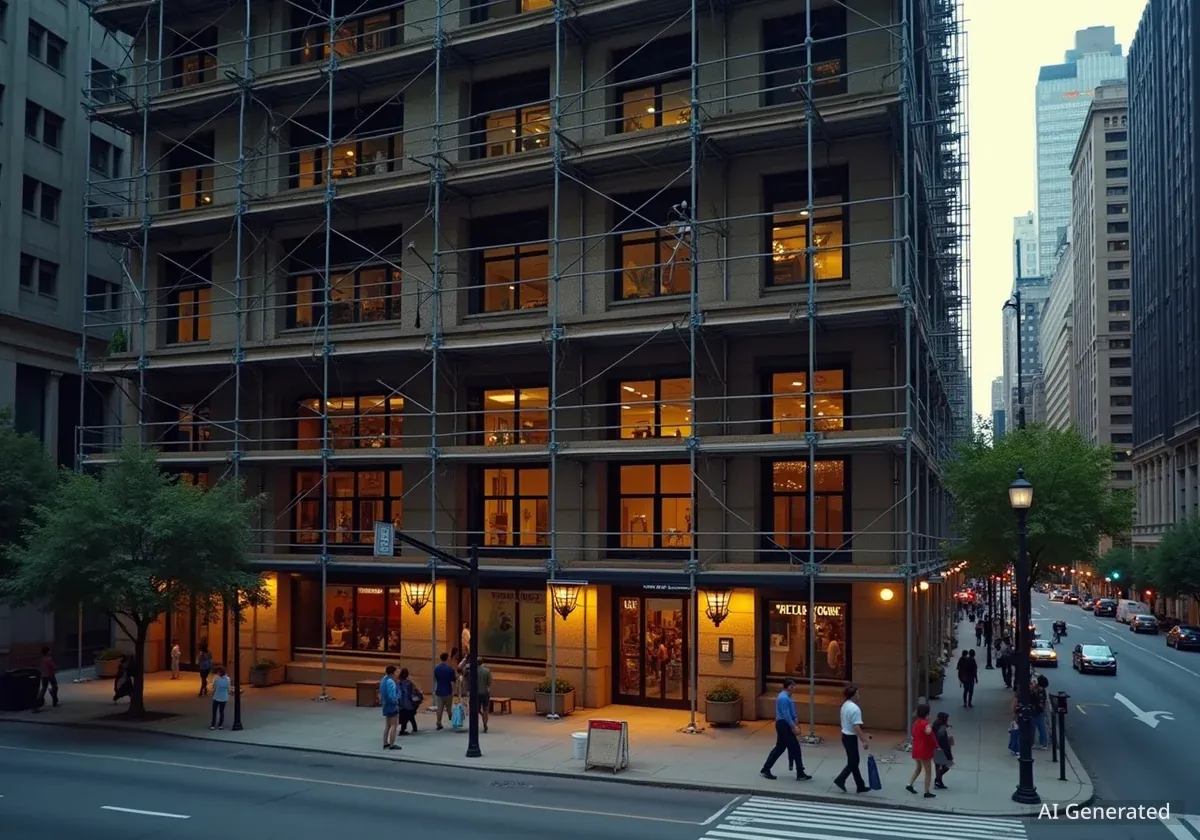Many prospective home buyers and sellers often rely on long-standing beliefs about the real estate market that may not align with current conditions. These common misconceptions can influence major financial decisions, from when to list a property to how much to save for a down payment. Understanding the facts behind these myths is crucial for navigating today's complex housing landscape.
Industry experts consistently point to several key misunderstandings that can hinder success in real estate transactions. By examining data and current market practices, both buyers and sellers can develop more effective strategies, avoid costly errors, and approach their goals with greater confidence, regardless of the season.
Key Takeaways
- The idea that spring is the only good time to sell a home is outdated; fall and winter often feature more motivated buyers and less competition.
- A 20% down payment is not a universal requirement, with many conventional and government-backed loans available for as little as 3% or even 0% down.
- Overpricing a home with the intent to negotiate down can deter qualified buyers and lead to longer market times and lower final sale prices.
- Not all home renovations yield a positive return on investment; cosmetic upgrades that are too personalized may not appeal to a broad audience.
Myth 1: You Must Sell Your Home in the Spring
One of the most enduring beliefs in real estate is that spring is the only optimal season to sell a home. This idea is rooted in the traditional market cycle, where families aimed to move during summer break. While spring often sees a surge in listings, this also means significantly more competition for sellers.
In contrast, the fall market presents a different set of opportunities. Buyers searching in autumn are often more serious and motivated by specific deadlines, such as job relocations or a desire to be settled before the holiday season and the end of the year.
Understanding Buyer Motivation
Fall buyers frequently face time constraints that spring buyers do not. This urgency can lead to quicker negotiations and a more streamlined closing process. With fewer homes on the market, a well-maintained property can capture more attention from this motivated buyer pool.
The Advantage of Less Competition
Listing a home in September, October, or even November means a seller's property stands out more. According to data from the National Association of Realtors (NAR), while inventory peaks in the summer, homes listed in the fall often sell just as quickly and for competitive prices due to the supply-demand imbalance.
A property that might be one of many similar homes in a crowded spring market can become a premium option in the fall. This dynamic gives sellers more leverage in negotiations than they might otherwise have when competing against dozens of other listings.
Myth 2: A 20% Down Payment Is Always Required
The belief that a 20% down payment is necessary to buy a home is a significant barrier for many first-time buyers. While a larger down payment reduces the monthly mortgage payment and eliminates the need for Private Mortgage Insurance (PMI), it is not a strict requirement for securing a home loan.
Down Payment Statistics
According to the National Association of Realtors' 2023 Profile of Home Buyers and Sellers, the median down payment for first-time buyers was only 8%. For repeat buyers, the median was 19%, demonstrating that even experienced buyers do not always put down 20%.
Financial institutions and government agencies have developed numerous loan programs to make homeownership more accessible. These options allow qualified buyers to purchase a home with a much smaller initial investment.
Low Down Payment Loan Options
Several popular loan types cater to buyers without a 20% down payment. Understanding these can open up possibilities for many aspiring homeowners.
- Conventional Loans: Many lenders offer conventional loans conforming to Fannie Mae and Freddie Mac guidelines with down payments as low as 3% for qualified buyers.
- FHA Loans: Insured by the Federal Housing Administration, these loans are popular with first-time buyers and require as little as 3.5% down.
- VA Loans: Eligible veterans, active-duty service members, and surviving spouses can often purchase a home with 0% down through a loan guaranteed by the U.S. Department of Veterans Affairs.
- USDA Loans: The U.S. Department of Agriculture offers loans for properties in eligible rural areas, often with no down payment required for qualified borrowers.
While a smaller down payment typically involves paying PMI, this cost can be a worthwhile trade-off for entering the housing market and beginning to build equity sooner.
Myth 3: Overprice Your Home to Leave Room for Negotiation
A common but flawed strategy is to intentionally list a home for a higher price than its market value, assuming buyers will negotiate it down. In today's information-rich environment, this approach often backfires. Modern buyers have access to vast amounts of data, including recent sales of comparable properties, and can easily identify an overpriced listing.
"Pricing a home correctly from day one is the most critical part of the selling strategy. An overpriced home can become 'stale' on the market, leading buyers to assume something is wrong with the property, even after the price is reduced." - Real Estate Market Analyst
When a home is priced too high, it may not even appear in the online search results for qualified buyers who set a realistic price range. This means the most likely purchasers may never see the listing at all during the crucial first few weeks on the market.
The Risks of an Inflated Asking Price
Setting an initial price that is out of line with the market can have several negative consequences. Homes that are priced appropriately from the start tend to generate more interest, receive more showings, and often attract multiple offers, which can drive the final sale price up. In contrast, an overpriced home can linger.
Data consistently shows that the longer a property sits on the market, the lower its eventual sale price is likely to be. Price reductions can signal desperation to buyers, giving them more negotiating power and often resulting in a final price below what the seller could have achieved with a proper initial listing price.
Myth 4: All Renovations and Upgrades Add Value
Many homeowners believe that any money spent on renovations will translate directly into a higher sale price. While certain updates can increase a home's value, not all improvements provide a positive return on investment (ROI). Highly personalized or niche upgrades may not appeal to the average buyer.
For example, converting a garage into a home gym or installing a bright, eccentrically tiled bathroom might suit the current owner's taste but could be a negative for potential buyers who need garage space or prefer neutral finishes.
Focus on Broad Appeal
The most valuable renovations are typically those that are functional, modern, and neutral. These improvements allow potential buyers to easily envision themselves living in the space without needing to undertake immediate, costly changes.
Which Renovations Offer the Best ROI?
According to industry reports like Remodeling Magazine's annual "Cost vs. Value" analysis, the projects that consistently offer the best return are often practical and cosmetic rather than extravagant.
- Minor Kitchen Remodel: Updating countertops, cabinet fronts, and appliances with mid-range finishes often recoups a significant portion of its cost.
- Bathroom Updates: Simple changes like a new vanity, modern fixtures, and re-grouting tile can refresh a bathroom without the cost of a full overhaul.
- Curb Appeal: Improvements to the home's exterior, such as a new garage door, updated landscaping, or a fresh coat of paint, make a strong first impression and have a high ROI.
- New Flooring: Replacing worn-out carpets or installing durable, neutral flooring like hardwood or luxury vinyl plank can significantly increase a home's appeal.
Ultimately, the key is to invest in updates that will be appreciated by the largest possible pool of buyers, rather than pouring money into renovations that reflect a very specific personal style.





